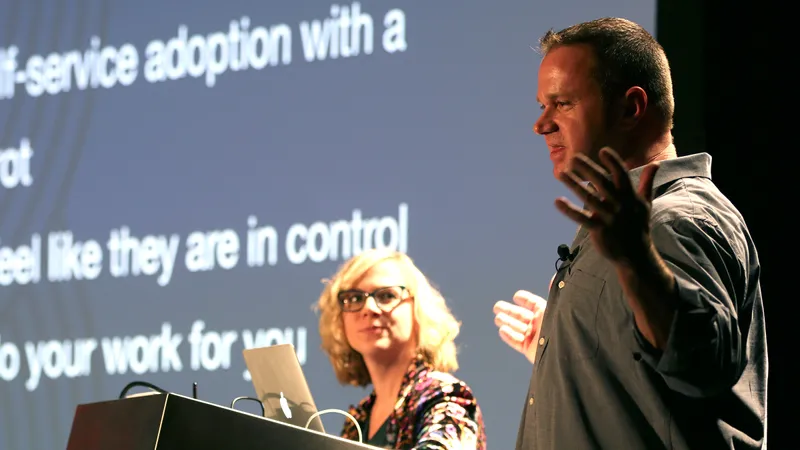The average organization has one full-time IT employee for every 1,500 devices. So it’s no surprise IT teams are looking for ways to transition from a “do-it-for-me” (DIFM) mentality to a “do-it-yourself” (DIY) solution. In today’s session, Keith Howe, director of network services at the North Kansas City School District (NKC) provided tips and tricks around how to employ Jamf Self Service technologies to get more done with less manpower.
NKC is the fourth largest district in Missouri with 24,000 students and staff across four high schools, five middle schools and 21 elementary schools. Their size, and the cost associated with supporting it, was a huge reason they began utilizing Jamf Self Service.
Howe said it costs the district an average of $15.11 per time a member of the IT staff connects with an end user. The average user contacts IT for support 12.1 times each year. This means each of the IT department’s nine full-time staff receive more than 6,000 tickets per year. So in short, providing IT support to a huge district is expensive. Thankfully, there are great solutions to help minimize that cost.
While saving the district a significant amount of money is a great reason to utilize Jamf Self Service, Howe also pointed out a couple of additional benefits that largely impact the user experience.
“We realized that Self Service could be used for more than app installs. You need to entice users to go to Self Service, and for us that’s printers. Every teacher likes to print.”
Even with these compelling reasons to make the shift to a DIY workflow, Howe noted that transitioning to something new is often a challenge for users. He said that while device changes can create stress, it can also drum up fear skepticism in users. That’s when creating a thoughtful process with the right tools can make all the difference. At NKC, those tools are Jamf, Code42 and SCCM.
Jamf at NKC
NKC has been using Jamf for several years to manage their Mac and iPad deployments to the teachers and students. New devices are often deployed with Apple School Manager, and end users leverage Self Service to customize their devices with the right apps, printers, and documents to keep their users productive.
Code42 at NKC
NKC has been a Code42 customer since 2015. “We use Code42 for everything, so we don’t tell our users to backup anymore. Code42 takes care of it for us,” said Howe about their backup policy. They also use Code42 for Self Service file recovery, as well as to assist with migrations during a tech refresh. Code42 is set to an automatic policy within Jamf Pro, so when new Macs are deployed the backup app is installed and backup are started immediately. Users don’t have to manage anything.
Howe and Traci LeDuc concluded their session by fielding questions from the audience specifically about how to encourage Self Service usage, and what items NKC puts in their app catalog. Popular items included scripts to make their users temporarily admins, adding plug-ins for documentation and popular links.
by Category:
Have market trends, Apple updates and Jamf news delivered directly to your inbox.
To learn more about how we collect, use, disclose, transfer, and store your information, please visit our Privacy Policy.

